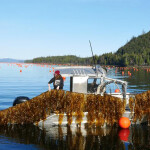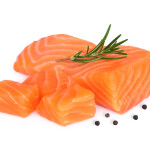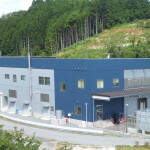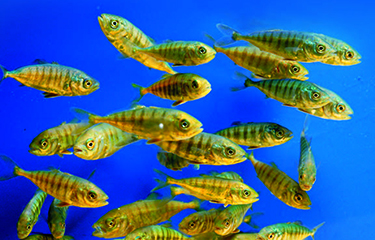Japan, the world’s largest producer of farmed yellowtail, is lagging behind competing countries in the proportion of its yellowtail seedlings that come from hatchery production.
The result is that the country's yellowtail producers are reliant on wild-caught fish to populate their farms, and face bigger challenges in producing a steady supply of high-quality fresh product year-round.
In 2012, the Japanese government put a cap on the number of seedlings that could be stocked, to prevent a glut in the market after high production led to a drop in wholesale prices. Despite setting an ambitious 240,000-metric-ton yellowtail export goal for 2030, a 70 percent increase from its 2018 production total, the country has not yet increased the stocking limitation. Since 2014, the country’s overall production volume of Seriola species has been kept near 130,000 metric tons (MT), with about 100,000 MT in S. quinqueradiata (“buri/hamachi” in Japanese, or “yellowtail” in English), 30,000 MT in S. dumerili (“kampachi” in Japanese, or greater “amberjack” in English), and a small amount of S. lalandi (“hiramasa” in Japanese, or “yellowtail amberjack/yellowtail kingfish” in English).
This dwarfs the approximately 20,000 MT of Seriola species farmed outside of Japan, mainly S. lalandi in Australia, the Netherlands, and Mexico; and S. rivoliana in Hawaii and Mexico. But those overseas producers source 100 percent of the fingerlings from hatchery production, while less than 20 percent of the mojako stocked in net-pens in Japan was spawned in captivity.
This is because, except for a poor seedling harvest in 2022, Japan usually has a plentiful stock of both wild-harvested yellowtail seedlings. Yellowtail spawn on the edge of the East China Sea shelf and juvenile fish live among drifting seaweed. Riding the current, they reach the coast of Japan around Kagoshima, where the the seedlings are harvested by dipnets in April and May and moved to wellboats. The amount of drifting algae has steadily increased since the 1990s, with the exception of 2021, when low algae levels resulted in a poor harvest of yellowtail seedlings. The annual quota of yellowtail seedlings allowed to be harvested for use in Japanese aquaculture is about 2.2 million fish, but in 2021, the number taken was less than half that.
Besides the unpredictability of the wild harvests, Japanese yellowtail farmers are also looking to mitigate damange from the annual threat of red tides. Because yellowtail grows well in sub-tropical environments, Japan's southern Shikoku and Kyushu islands have become the country's central yellowtail aquaculture-production areas. But red tides occur in those areas in the summer, impacting operations. In 2009 and 2010, red tides around Kyushu caused JPY 8.5 billion (USD 65.5 million, EUR 60.1 million) in aquaculture-related losses. Aquaculture farmers had no choice but to move their net cages to areas where there was no red tide, or to harvest their yellowtail at a lower weight before the red tides subsumed their farms.
This disaster spurred the subsequent study of initiating early spawning at a hatchery facility at the the Fisheries Research Agency (FRA) Seikai Fisheries Research Institute. A resulting collaboration between Nagasaki University and the Higashimachi Fisheries Cooperative Association in Kagoshima Prefecture was detailed in a report in the March 2022 issue of FRA News: “Artificial Seedlings of Buri – Aiming for popularization.”
The study's senior researcher and lead author, Takuro Hotta, found it necessary have yellowtail seedling of a minimium size of 10 centimeters by March in order to grow them up to four kilograms by the following April, in advance of the annual red tides. In order to achieve that goal, Hotta said ...
Photo courtesy of the Fisheries Research Agency








